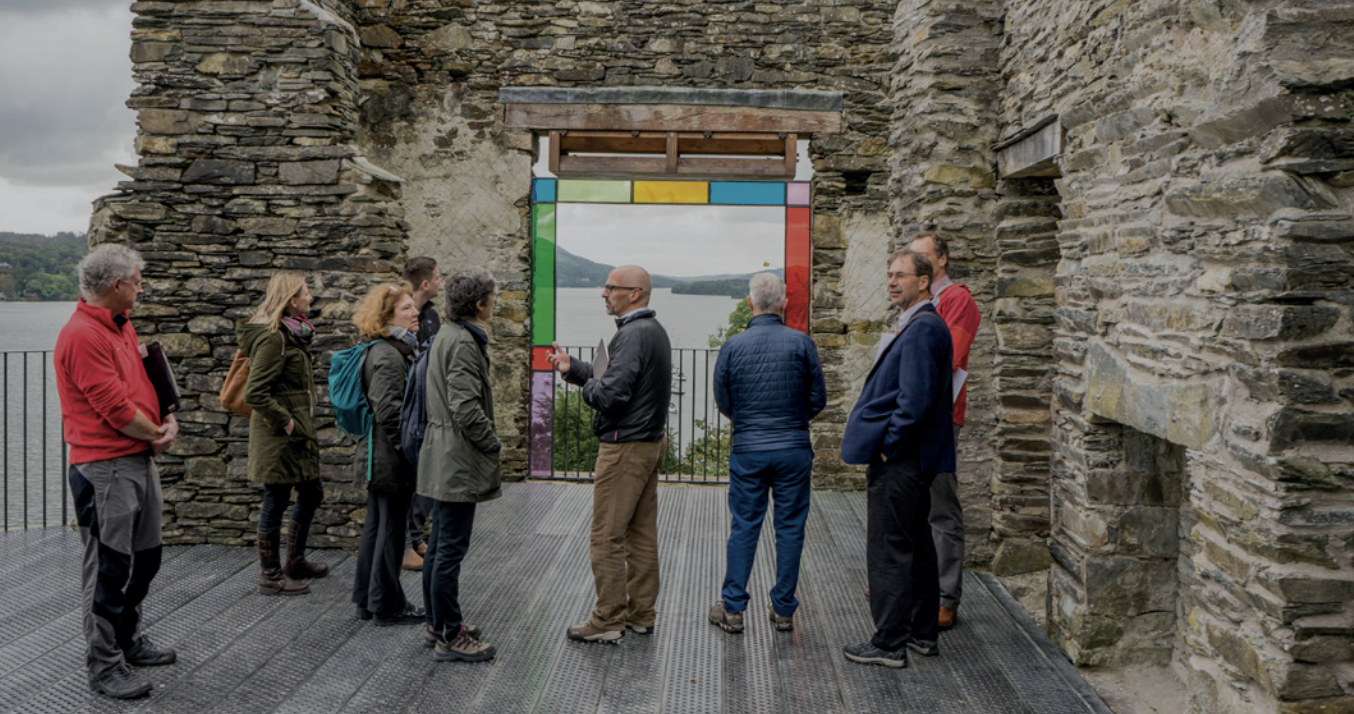
Reaching southwards from the central mountain core of the Lake District down to the sea, the Windermere valley is a vast and varied landscape, featuring, as its glorious centrepiece, England’s longest and largest natural lake.
Formed in a glacial trough, running north-south after the ice retreated around 12,000 years ago, the famous lake measures 18 kilometres in length, derives its name from a blend of the Old Norse place-name ‘Vinandr’ and an Old English word ‘mere’ meaning lake. It contains 18 islands in total, many of them heavily wooded, and its outflow, the River Leven, eventually winds its way out into Morecambe Bay. Although simply named Windermere, many people refer to it as Lake Windermere, so as to not get it confused with the village of the same name.
All around the lake is a rich and diverse landscape, from the more rugged volcanic northern basin to the softer shales and gentle fells of the southern basin. The eastern shore is more accessible and therefore more populated than the more densely wooded west side.
Evidence of the earliest human activity in the valley comes from Mesolithic flints found under the Ambleside Roman fort to the north. There are also probable Bronze Age burial cairns on the Tongue at Troutbeck and on Cunswick and Scout Scars near Kendal. There is likely to have been Norse settlement in the area and by the medieval period Bowness was an important fishing village, centred on catching Windermere char.
In the 16th and 17th centuries, farming was reorganised and expanded with many new walled fields being created whilst, at the same time, a new prosperity led to a period of rebuilding. There are many examples of fine statesmen farm buildings from that time that remain today - including Townend, The Crag, Longmire Year, High Green and Town Head.
In 1847, the arrival of the railway enabled a new level of tourism to Windermere. Along with its general accessibility by coach, the valley became an incredibly popular attraction – not just for the wealthy but for working-class visitors too. The villages of Windermere and Bowness-on-Windermere quickly expanded to cater for the increasing numbers of visitors.
In the 20th century, Windermere was the focus of a number of writers. Arthur Ransome wrote his classic ‘Swallows and Amazons’ at Low Ludderburn. In 1930, a 23 year-old Alfred Wainwright did his first Lakeland walk at Orrest Head above Windermere and started his lifelong love affair with the region, writing and illustrating his best-selling guides. John Cunliffe, a Kendal schoolteacher, created his ‘Postman Pat’ books around a fictional Lakeland valley, based on Longsleddale.
Conservation is a vital part of Windermere’s history, with the first environmental protest targeted against the building of the railway from Kendal. The conservation movement also prevented the construction of reservoirs and an airplane factory in the valley and halted the railway line extension further into the Lake District.
Windermere is still one of the Lake District’s most popular valleys for visitors and a thriving community of farming and industry.